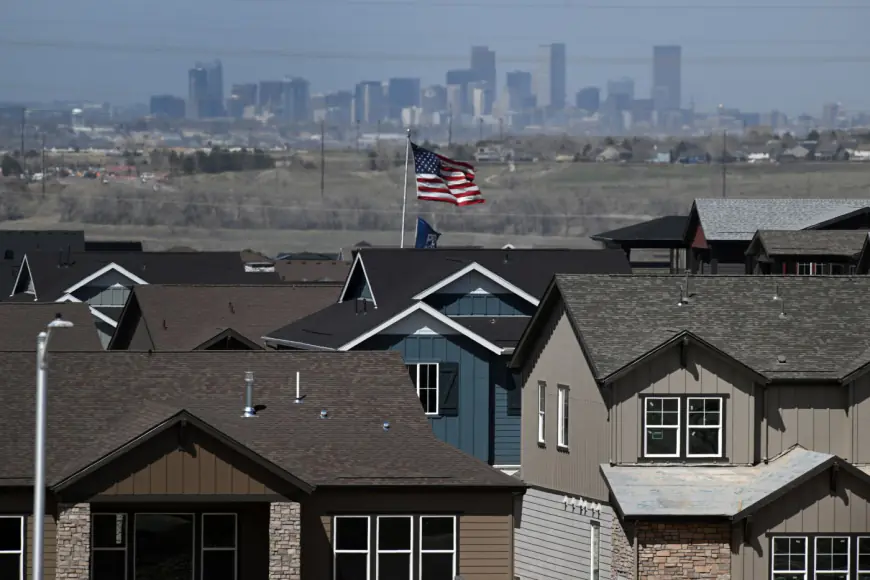Metro Denver homeowners can finally exhale after 14 years of rising home values and taxes
Property owners, who have had to deal with 14 straight years of rising valuations and property tax bills, including a historic jump two years ago of 30% or higher in many places, can now breathe easier.

Homeowners across metro Denver should finally receive a reprieve from property tax increases in the next two years after county assessors reported mostly flat to declining residential property values.
“This is a bit of a sigh of relief,” said Denver County Assessor Keith Erffmeyer, as he exhaled after a news conference Wednesday morning.
Property owners, who have had to deal with 14 straight years of rising valuations and property tax bills, including a historic jump two years ago of 30% or higher in many places, can now breathe easier. And county assessors and their staff, who faced a flood of angry calls and fielded double the number of protests than usual from upset property owners two years ago, can bask in more manageable pace as they hum “The Sound of Silence.”
Every two years, assessors in Colorado must determine a value for residential and commercial properties, and that number goes into the formula used to determine property taxes. Properties were valued as of June 30, 2024, using transactions going back 24 months.
In Denver County, with 240,000 residential properties, valuations declined an average of 1.6%, with most properties falling within a range of down 5% to up 5%, Erffmeyer said. That contrasts with a 33% average gain in the prior two-year cycle.
The biggest declines were concentrated along the I-25 corridor and in neighborhoods closer to downtown. Athmar Park was down 8.7%; Clayton and College View, both fell about 7.5%, North Capitol Hill was down 7.3%, while values fell 6.99% in nearby Civic Center.
Cherry Creek values were up 11.7% on average, while the Belcaro neighborhood to the south saw an increase of 7%. Neighborhoods like Union Station, up 14.2%, and Denver International Airport, up nearly 25%, had larger gains, but new construction, not a newfound popularity, skewed much of those increases.
Arapahoe County, with 228,697 residential properties, saw most homes fall in a range of change from flat to down 7%, while Adams County, with 207,844 properties, had declines in the 2% to 6% range for most of its homes.
“For many of us who have experienced double-digit increases in property values the last few years that greatly affected our property taxes, this will come as a welcomed change,” said Arapahoe County Assessor PK Kaiser.
About two-thirds of homes in Douglas County, with 163,00 properties, experienced a decline in value, most of them in the single-digit range, said assessor Toby Damisch. Most properties fell within a range of down 10% to up 5%, a huge moderation from the 47% increase reported two years earlier.
Boulder County, with 109,142 properties, saw a median decline of 1%, while Broomfield County with 27,500 properties and a lot of construction, reported the widest variation, from down 5% to up 25%.
Jefferson County, with 224,752 properties, bucked the trend with a median increase of 2%. But Assessor Scot Kersgaard said few owners will land exactly on that number, noting that just under two-thirds of owners will fall within a range of up 5% to down 5%.
Assessors noted that there wasn’t a set pattern they could discern regarding what residential property types rose in value versus which fell. Luxury versus entry-level, condos versus detached homes, newer versus older communities — it was hard to discern what drove the changes.
“It’s a mix, a very mixed bag of that,” Erffmeyer said, noting he didn’t see any commonality. That was different than in commercial real estate, where office buildings and apartments were much more likely to see a decrease in value compared to industrial, retail and hospitality properties.

Notices of valuation should arrive in the mail soon, if they haven’t already landed. They are more streamlined and will contain less information than in past years. The biggest subtraction people might notice is the removal of an estimate of expected taxes, said Colorado Property Tax Administrator JoAnn Groff.
The estimates provided the last go-around ended up being meaningless as the governor, legislators and taxpayer advocates jockeyed to soften the blow of big property tax hikes. Local governments also hadn’t determined their mill levies yet. Many owners zeroed in on that number and flooded assessor offices with calls and complaints about something they had no control over.
What assessors can address are the valuation estimates on individual properties. Owners who disagree with that value have until June 9 to make an appeal, which they can do online in most metro counties, via mail or in person.
And while local governments and school districts could still upset the cart by raising mill levies, most property owners should find relief.
What's Your Reaction?







































































































